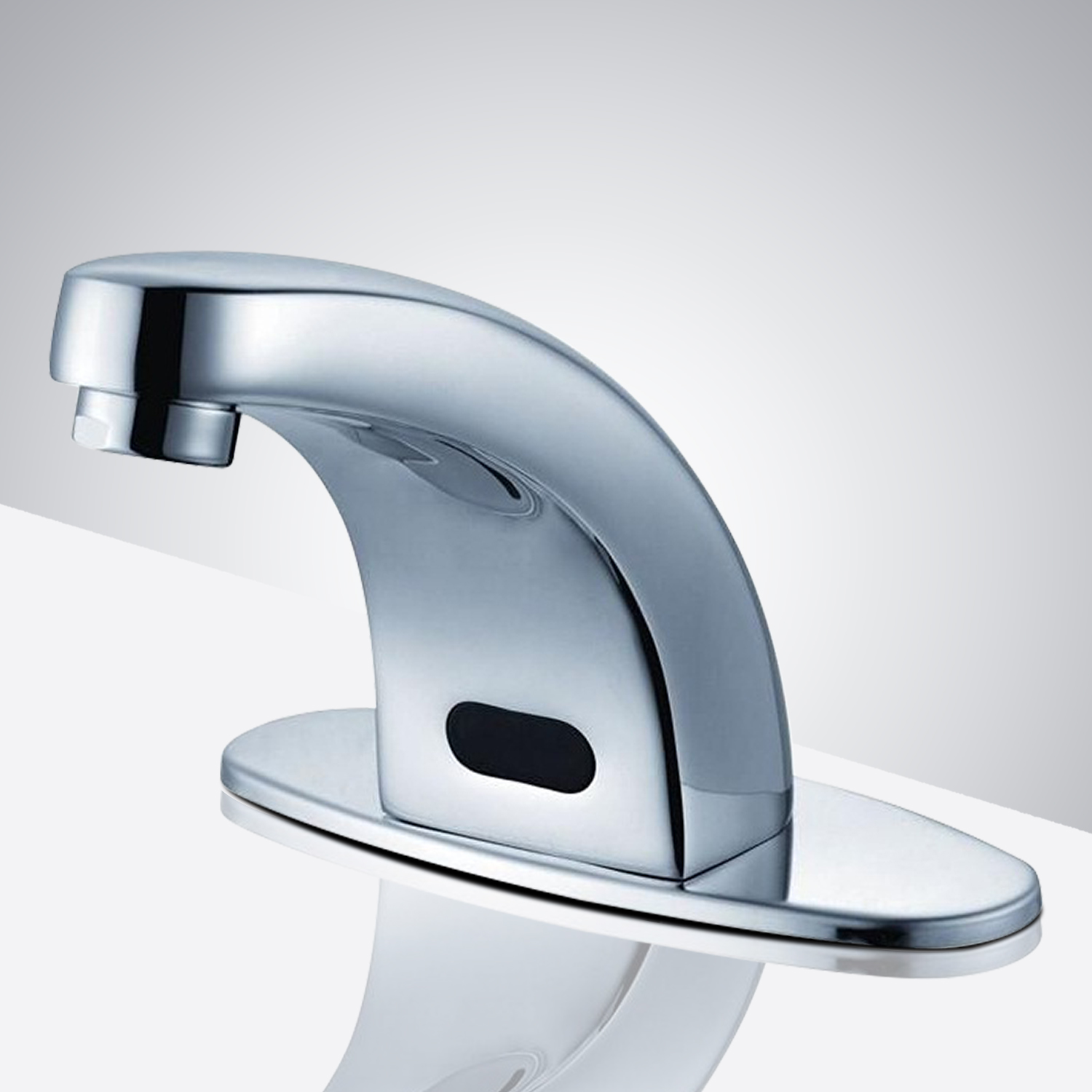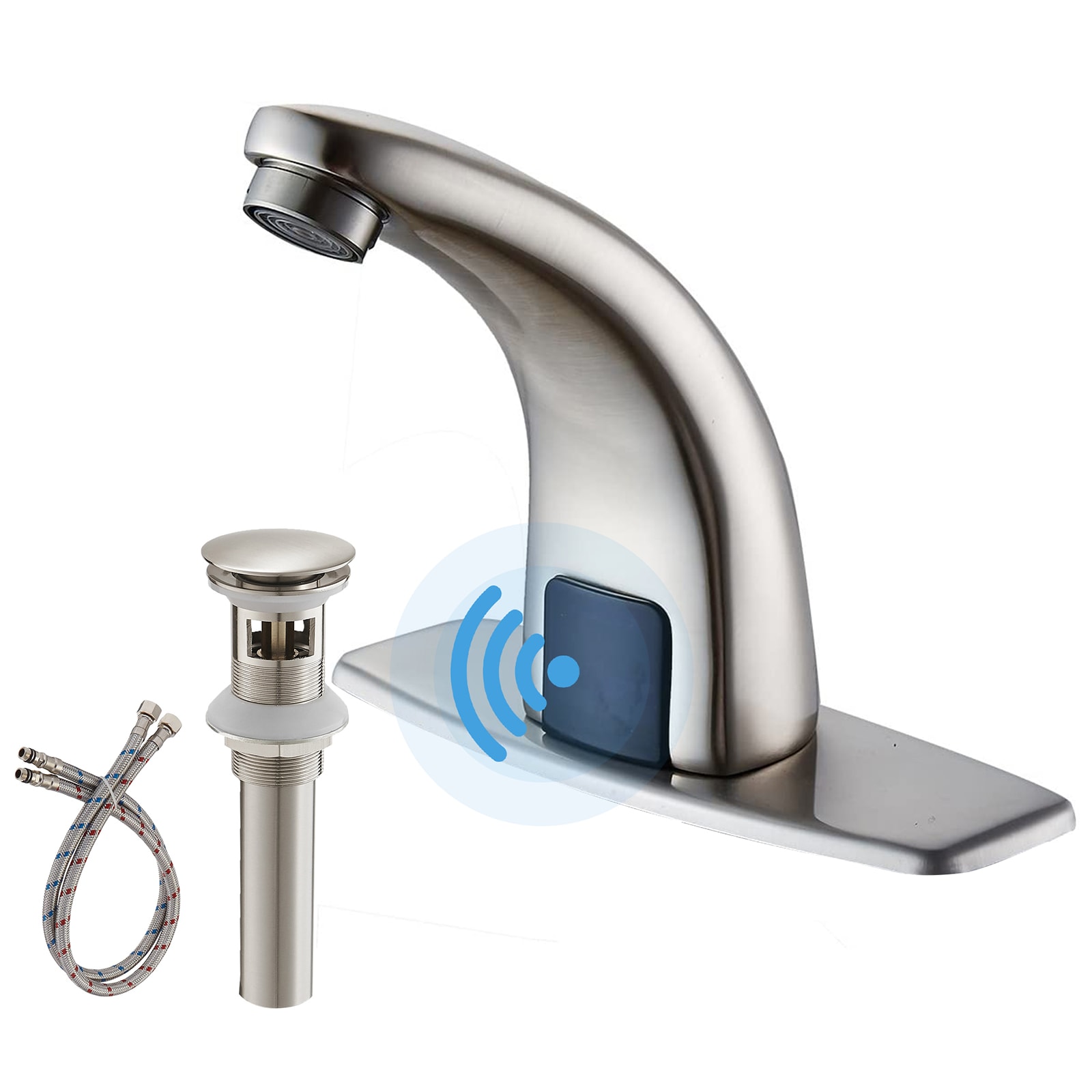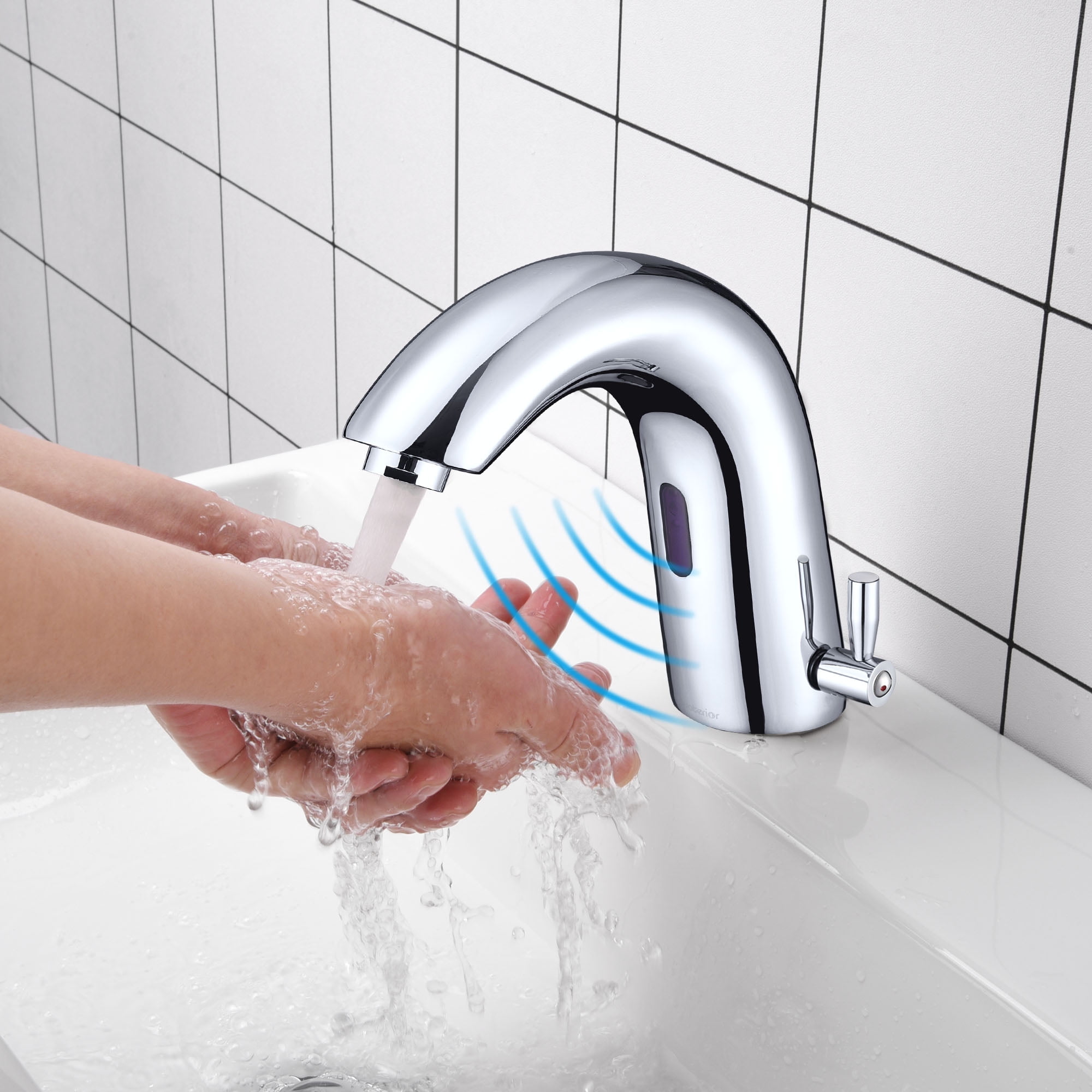Features and Benefits: Touchless Bathroom Sink Faucet

Touchless bathroom sink faucets are an innovative and convenient way to upgrade your bathroom. They offer a range of features and benefits that enhance hygiene, convenience, and water efficiency.
Touchless bathroom sink faucets offer a hygienic and convenient way to wash your hands, eliminating the need to touch the faucet handle. If you’re looking for a more stylish and modern option, consider a single hole bathroom sink faucet.
These faucets feature a single hole mount, which gives them a sleek and minimalist look. They’re also available in a variety of finishes to match your bathroom decor. Touchless bathroom sink faucets are a great way to upgrade your bathroom and make it more user-friendly.
One of the primary benefits of touchless faucets is their ability to promote hygiene. By eliminating the need to touch the faucet handle, they reduce the risk of cross-contamination and the spread of germs. This is especially important in public restrooms or shared bathrooms.
Touchless faucets are also incredibly convenient. They can be operated with a simple wave of the hand, making them easy to use for people of all ages and abilities. This is particularly beneficial for individuals with limited mobility or dexterity.
A touchless bathroom sink faucet is a great way to keep your bathroom clean and germ-free. These faucets use sensors to detect when your hands are near, and they automatically turn on the water. This means that you don’t have to touch the faucet handle, which can help to reduce the spread of bacteria.
If you’re looking for a high-quality touchless bathroom sink faucet, American Standard is a great option. American Standard is a leading manufacturer of bathroom fixtures, and their touchless bathroom sink faucets are known for their durability and reliability. With a touchless bathroom sink faucet from American Standard, you can be sure that you’re getting a product that will last for years to come.
In addition to their hygiene and convenience benefits, touchless faucets can also help to conserve water. They typically have a built-in sensor that turns off the water flow automatically when the user’s hands are no longer detected. This can help to reduce water waste and lower utility bills.
There are a variety of innovative designs and technologies used in touchless faucets. Some models feature hands-free soap dispensers, while others have built-in temperature controls. Some touchless faucets even have voice-activated controls, allowing users to turn on the water, adjust the temperature, and dispense soap with simple voice commands.
Types of Touchless Faucets
- Infrared Sensor Faucets: These faucets use infrared sensors to detect the presence of hands. When hands are detected, the faucet turns on automatically.
- Motion Sensor Faucets: These faucets use motion sensors to detect the movement of hands. When movement is detected, the faucet turns on automatically.
- Capacitive Sensor Faucets: These faucets use capacitive sensors to detect the presence of hands. When hands are detected, the faucet turns on automatically.
Advantages of Touchless Faucets
- Hygiene: Touchless faucets reduce the risk of cross-contamination and the spread of germs.
- Convenience: Touchless faucets are easy to use for people of all ages and abilities.
- Water Efficiency: Touchless faucets can help to conserve water by automatically turning off the water flow when the user’s hands are no longer detected.
- Innovative Designs and Technologies: Touchless faucets are available in a variety of innovative designs and technologies, including hands-free soap dispensers, built-in temperature controls, and voice-activated controls.
Disadvantages of Touchless Faucets
- Cost: Touchless faucets are typically more expensive than traditional faucets.
- Reliability: Touchless faucets can be less reliable than traditional faucets, especially if the sensors are not properly calibrated.
- Power Source: Touchless faucets require a power source, either batteries or an electrical outlet.
Conclusion
Touchless bathroom sink faucets offer a range of features and benefits that make them a worthwhile investment for any bathroom. They are hygienic, convenient, and water-efficient, and they come in a variety of innovative designs and technologies. While they are typically more expensive than traditional faucets, their benefits often outweigh the cost.
Types and Applications

Touchless bathroom sink faucets come in a variety of types, each with its own unique design, functionality, and installation method. Understanding these differences is crucial for selecting the most appropriate faucet for your bathroom’s style and specific needs.
The most common types of touchless bathroom sink faucets include:
Wall-Mounted Faucets
- Mounted directly to the wall, providing a sleek and modern look.
- Ideal for small bathrooms or those with limited counter space.
- Available in various designs and finishes to complement any bathroom décor.
Countertop-Mounted Faucets
- Installed on the bathroom counter, offering a more traditional appearance.
- Provide greater flexibility in placement and height adjustment.
- Available in a wide range of styles, from classic to contemporary.
Deck-Mounted Faucets
- Mounted directly onto the sink deck, creating a seamless and integrated look.
- Ideal for sinks with pre-drilled holes or those with a large deck area.
- Available in a variety of handle styles and finishes to match the sink and bathroom décor.
Sensor-Activated Faucets
- Utilize motion sensors to detect hand movement, automatically turning on and off the water flow.
- Provide hands-free operation, promoting hygiene and reducing water waste.
- Available in both wall-mounted and countertop-mounted models.
Voice-Activated Faucets
- Controlled by voice commands, allowing users to turn on, adjust temperature, and turn off the water flow without touching the faucet.
- Offer the ultimate convenience and accessibility, especially for individuals with limited mobility.
- Available in a growing number of models, with advanced features and compatibility with smart home devices.
Installation and Maintenance

Installing and maintaining a touchless bathroom sink faucet is a straightforward process that can be completed with basic tools and materials. By following these guidelines, you can ensure proper operation and extend the lifespan of your faucet.
Before beginning, gather the necessary tools and materials, including a wrench, pliers, screwdriver, Teflon tape, and the new faucet. It is also important to turn off the water supply to the sink before starting the installation.
Installation, Touchless bathroom sink faucet
- Remove the old faucet by unscrewing the nuts that secure it to the sink.
- Clean the sink surface and apply Teflon tape to the threads of the new faucet.
- Insert the new faucet into the sink hole and tighten the nuts.
- Connect the water supply lines to the faucet and tighten the connections.
- Turn on the water supply and check for leaks.
Troubleshooting
- If the faucet is leaking, check the connections and tighten them if necessary.
- If the faucet is not working, check the batteries and replace them if needed.
- If the faucet is not responding to motion, check the sensor and make sure it is clean and unobstructed.
Maintenance
- Clean the faucet regularly with a mild soap and water solution.
- Replace the batteries every 6-12 months, or as needed.
- Check the sensor and clean it as needed to ensure proper operation.